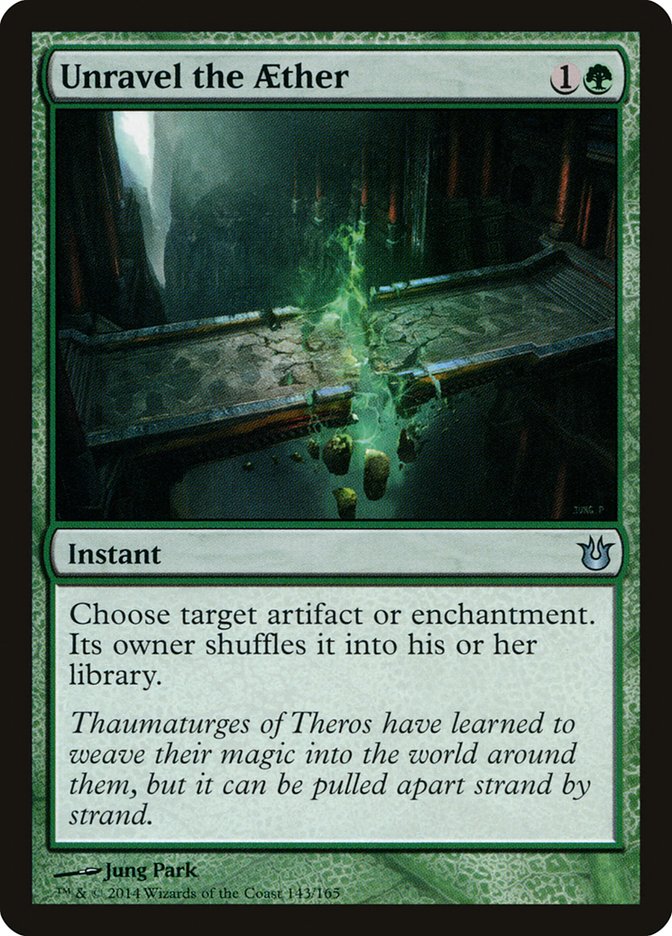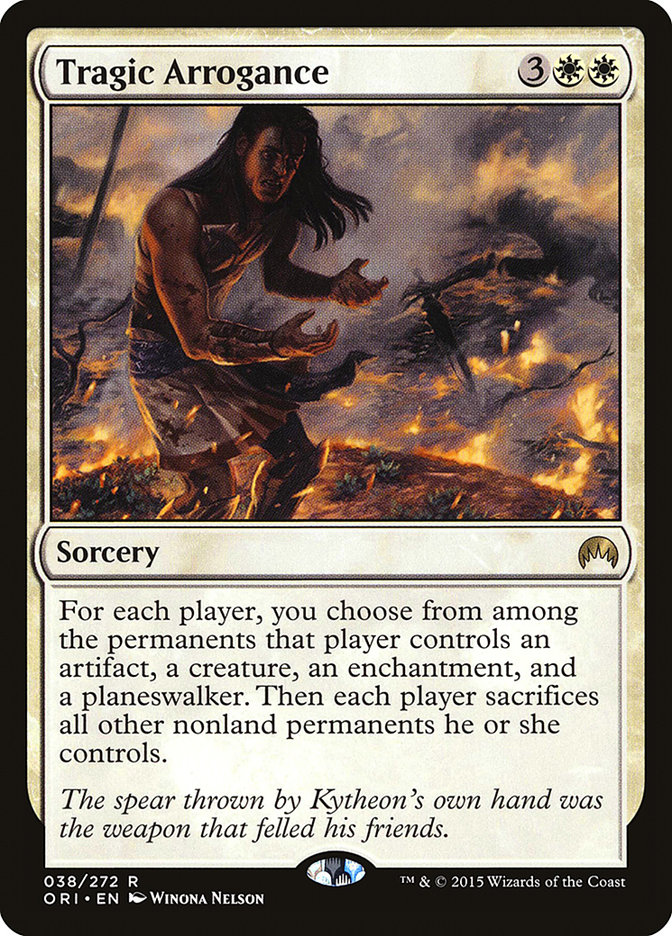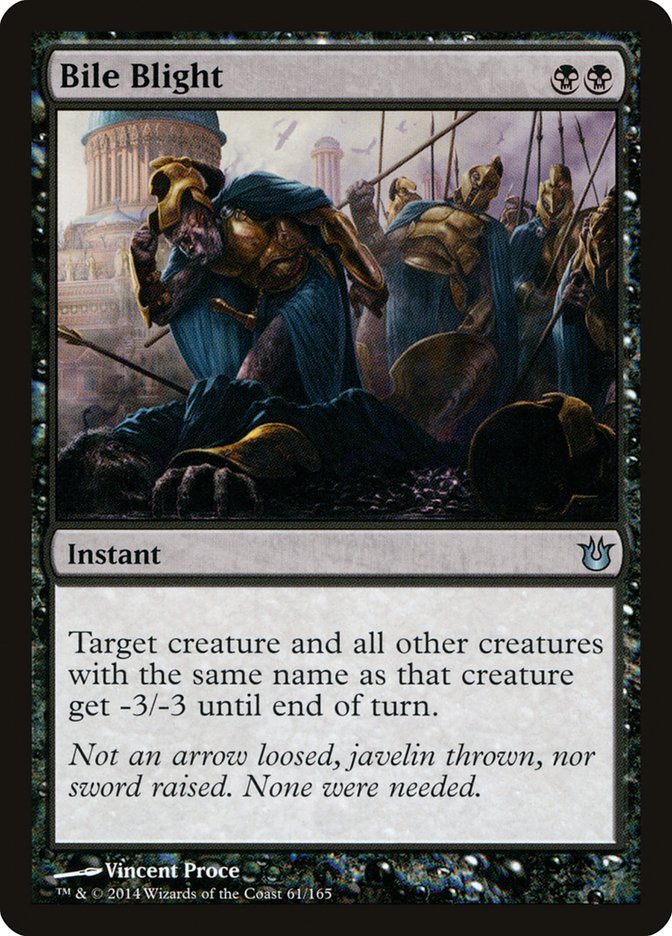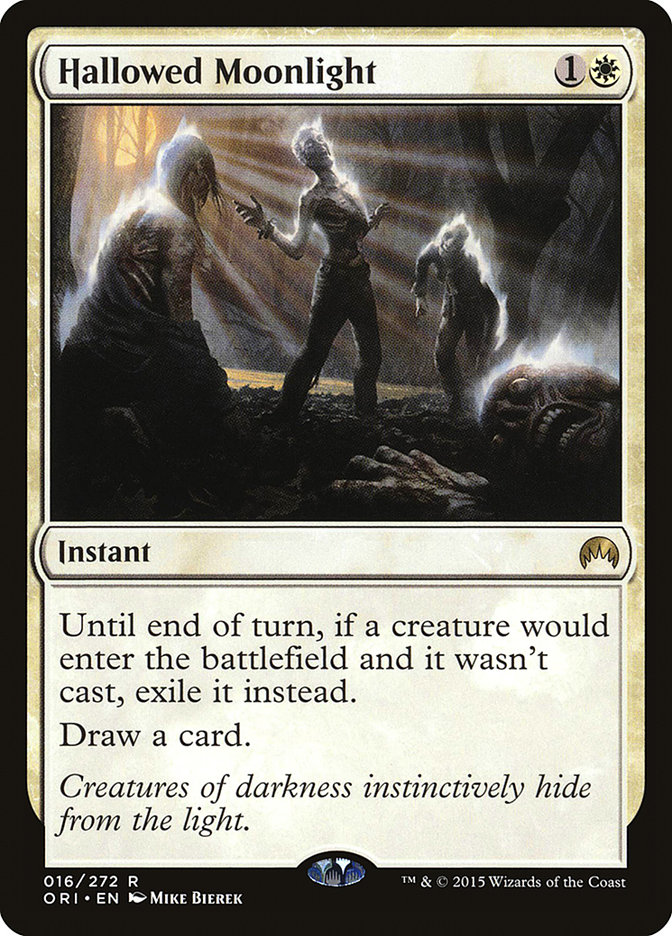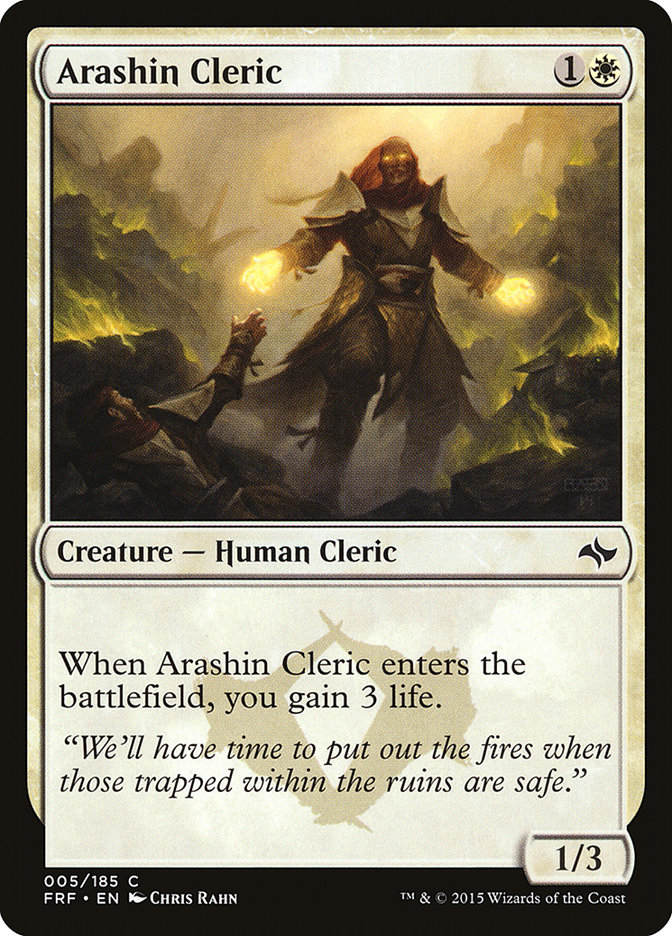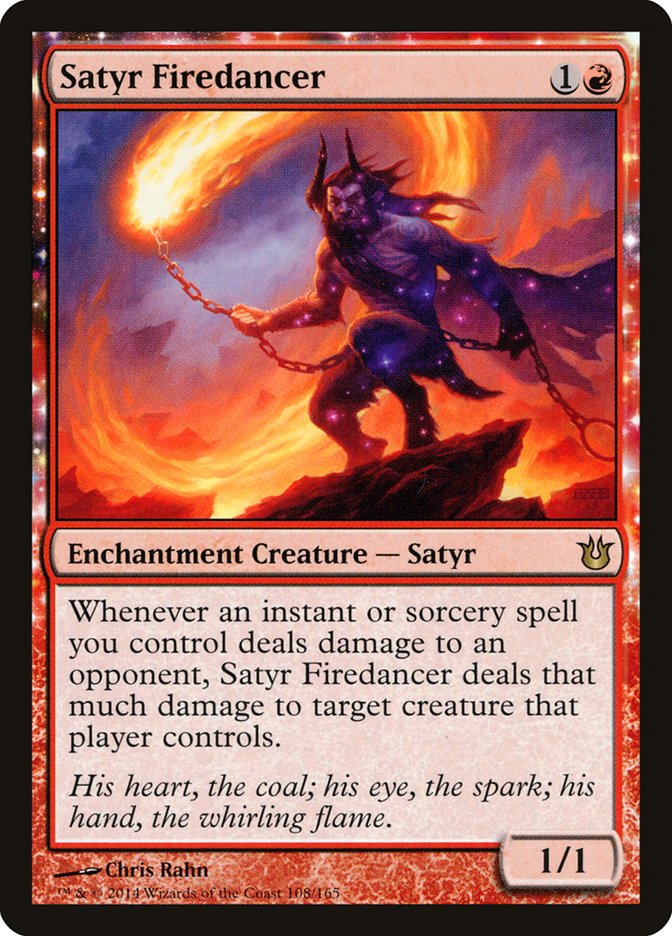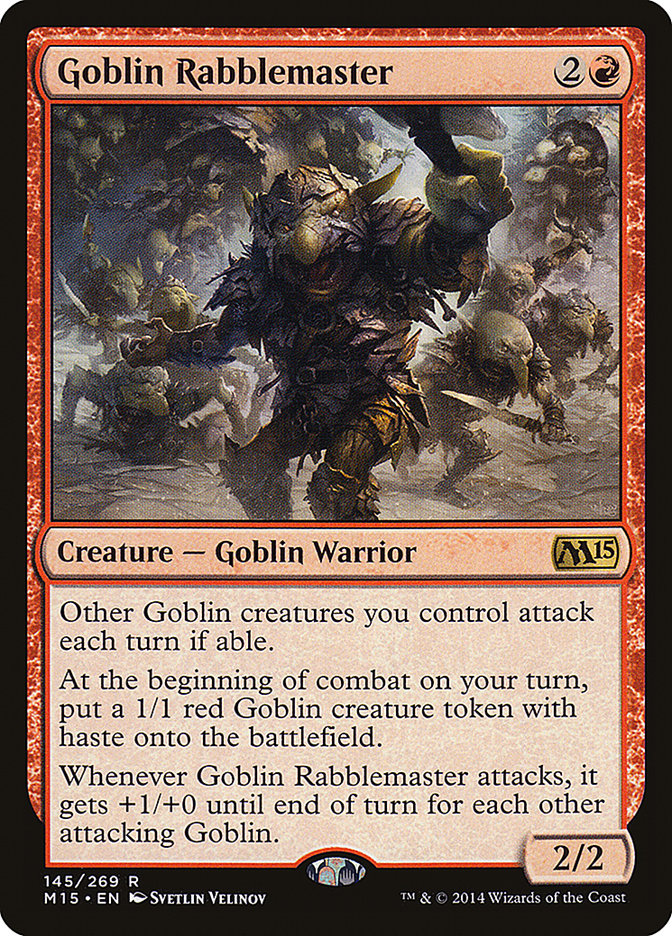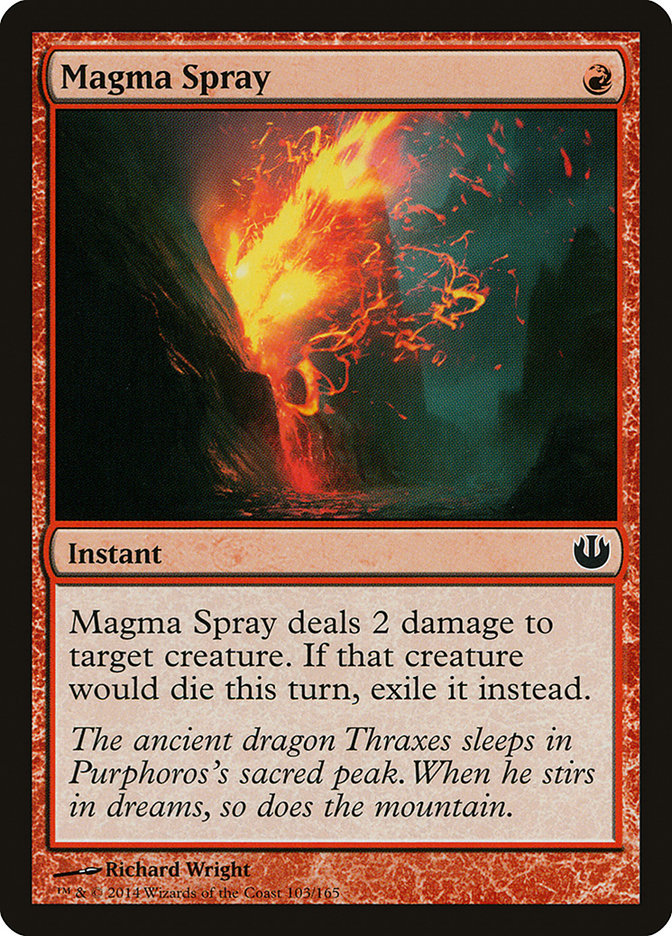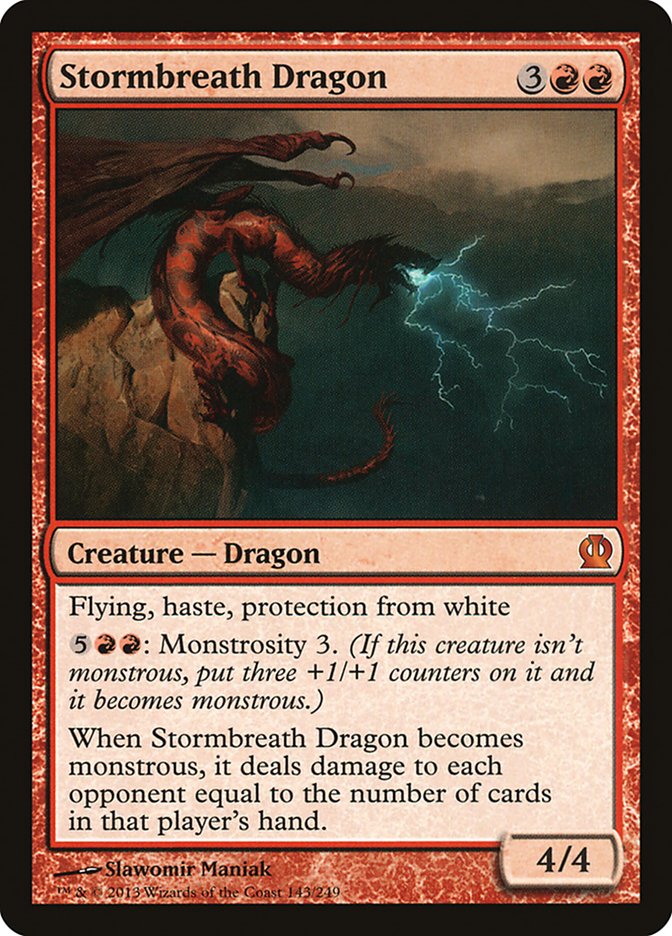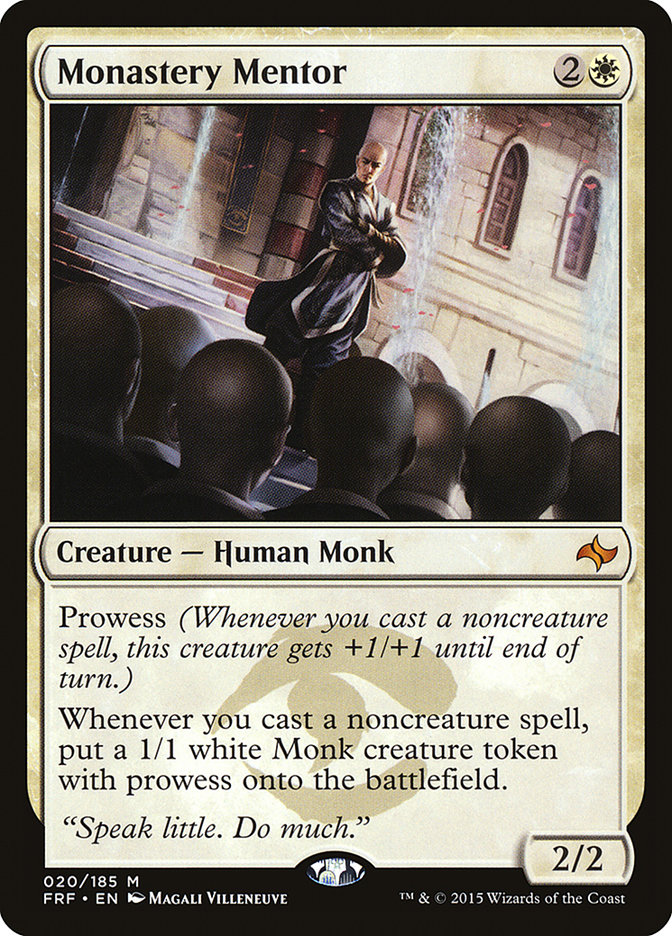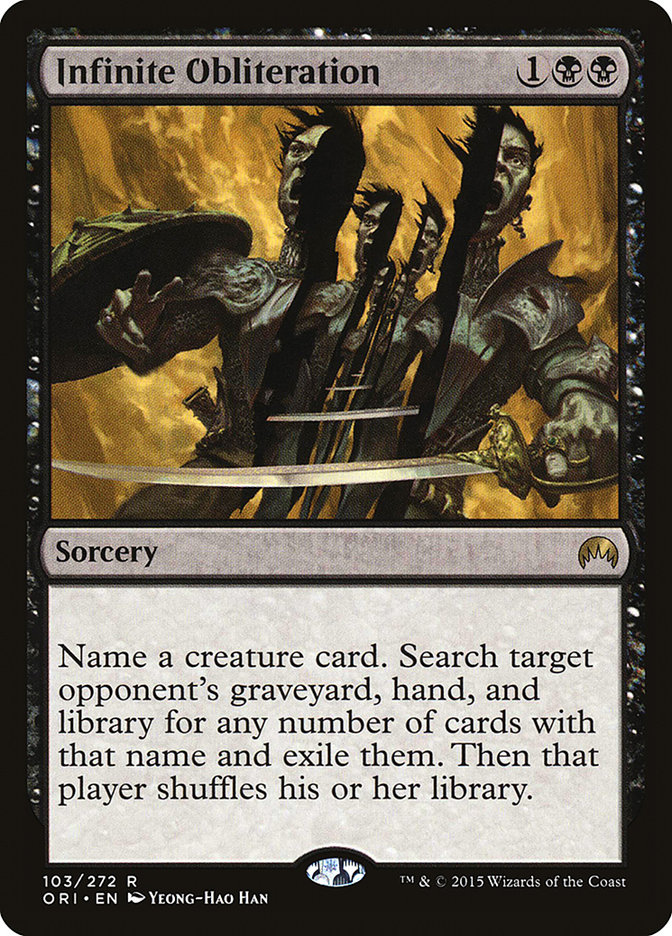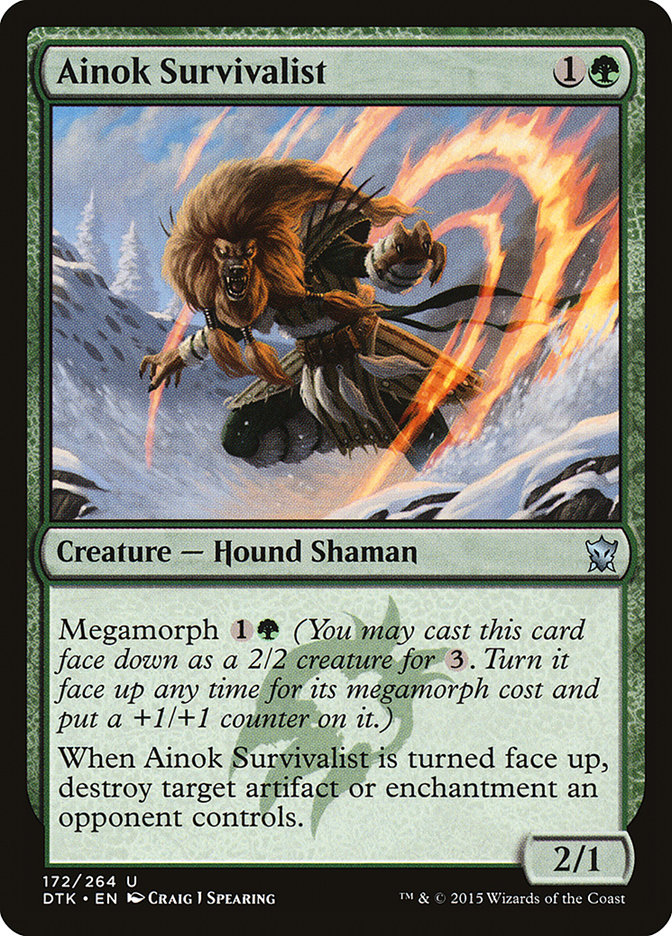I’m going to miss Hero’s Downfall and Thoughtseize.
I’ve played them in every Standard (and Block) Pro Tour and Grand Prix since they’ve been legal.
Courser of Kruphix, I will miss even more. Still, I am looking forward to the new rotation. It’s going to be a brand-new ballgame when we’re building with just Khans of Tarkir Block, Magic Origins, and Battle for Zendikar.
That said, this Standard format is a great one. Just look at the results from Grand Prix San Diego! It’s not just that the GP was won by U/R Sphinx’s Tutelage. The Top Eight included U/R Tutelage, Constellations, Esper Dragons, G/W Aggro, Jeskai, B/R Dragons, Abzan Control, and Abzan Aggro, which doesn’t even include U/R Thopters and G/R Devotion, which were two of the biggest decks by metagame share at the event.
The top of the metagame greatly evolved from last week, when Mono-Red and U/R Thopters caught a lot of people by surprise. This week, everyone was prepared. As a result, both Mono-Red and U/R Thopters got killed, despite being quite popular.
It’s kind of funny to me to see coverage drive a narrative where the biggest deck in the format is U/R Thopters (made possible by splitting Abzan Control into three decks, Abzan Control, Abzan Midrange, and Abzan Megamorph). In real life, all three of those “decks” are the same deck often with only a couple cards different between them. Additionally, Abzan Control continues to win a disproportionate amount of the time despite being the most played deck.
Meanwhile, U/R Thopters and Mono-Red made up nearly a quarter of the Day Two metagame, yet between them they scored just a single Top Sixteen and a single Top 32 (with zero in the Top Eight, of course).
Here’s a look at the Top 32 metagame of Grand Prix San Diego (weighted by finish) and how it compares to the Day Two metagame:
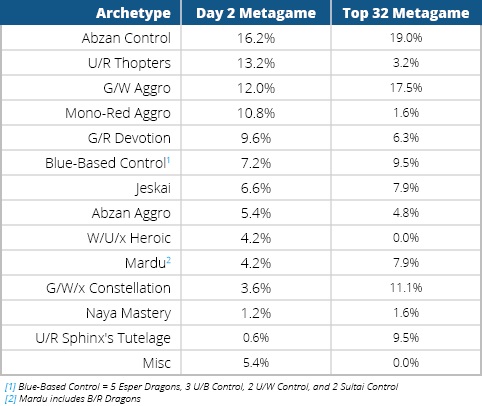
This is a very diverse Day Two, as well as a diverse Top 32. There were four decks that each made up more than 10% of the field, two of which bombed (U/R Thopters and Mono-Red Aggro) and two of which crushed (Abzan Control and G/W Aggro).
The emergence of G/W Aggro as one of the defining decks of the format is the most important development to come out of this weekend. The deck’s inventor, Brian Kibler, was the only player to play the deck at Pro Tour Magic Origins, but he drew a lot of attention with his 9-1 finish in the Standard rounds.
The deck looks somewhat dubious, but looks can be deceiving. A lot of top players experimented with the deck this week, expecting to dismiss it, however keeping an open mind. After all, Brian Kibler is one of the all-time great deckbuilders, and if anyone can make a G/W creature deck work, Kibler is usually one of the most likely culprits.
Over the course of this week, G/W Aggro began to dominate Magic Online. The deck is deceptively strong and preys on other aggro decks, not to mention being resilient to most of the cards people put in their decks to beat aggro decks.
By the start of Day Two, G/W Aggro had become the third biggest deck in the format. By the end of Day Two, it had the best win percentage of any archetype making up more than 5% of the Day Two field. Few (if any) G/W Aggro decks strayed far from Kibler’s design. Here is the highest-finishing build:
Creatures (28)
- 4 Elvish Mystic
- 4 Fleecemane Lion
- 3 Boon Satyr
- 2 Courser of Kruphix
- 2 Warden of the First Tree
- 2 Hidden Dragonslayer
- 4 Den Protector
- 4 Deathmist Raptor
- 3 Nissa, Vastwood Seer
Planeswalkers (2)
Lands (24)
Spells (6)

Loren played an identical maindeck to Kibler’s from last week. His only sideboard changes were to remove the Hushwing Gryffs (per Kibler’s suggestion from his article the day before the Grand Prix), to make room for a couple of Arashin Clerics, and swapping one Unravel the Aether for the fourth Dromoka’s Command (all to make the Mono-Red matchup even more rock solid).
Not only is this deck not a flash in the pan, it’s going to change the way people build decks over the next several weeks. You can’t fight it with most traditional anti-aggro cards, as the deck just grinds through any amount of removal. It also punishes other aggressive decks enough that I expect to see a change in the balance of power in the format.
Okay, what actually beats G/W Aggro, then?
Well, to start with, Abzan Control is actually a pretty rough matchup for G/W Aggro. Kibler faced it zero times at the Pro Tour, helping contribute to that 9-1 record. He did OK against it at the Grand Prix, but from talking with him at the event he seemed to share my experience that it was a matchup that is probably even-ish at many levels. If the G/W Aggro player is more experienced with the matchup, or just a stronger player, there is a lot of room for them to get an edge. However, if the Abzan player is both experienced in the matchup and a strong pilot, they are generally going to have a pretty solid edge.
While Abzan’s removal isn’t actually as good as they would like it to be against G/W’s never-ending supply of creatures, the Abzan deck makes great use of the best card in the format against G/W:
Elspeth completely dominates G/W Aggro, so much so that I believe Kibler actually added Elspeths to his sideboard for this weekend for the mirror. Den Protector can sometimes team up with a Boon Satyr or Ajani, Mentor of Heroes to take an Elspeth out, but if the Abzan player realizes how much more important that battle is than any of the other challenges presented by G/W, they can usually just plus Elspeth until their opponent submits.
This means being careful about dropping Elspeth when your G/W opponent has unknown morphs. This means focusing your Abzan Charms on Den Protector (rather than the more intuitive Deathmist Raptor). This means being careful about relying on blocking (Valorous Stance, Dromoka’s Command, Hidden Dragonslayer, and Boon Satyr are a deceptively potent anti-blocker package), and sideboarding intelligently based on G/W’s capabilities.
To give you an idea of what I mean, take a look at the Abzan list I played in San Diego, which was only a couple cards off from the list Paul Rietzl and Matt Sperling finished third and twelfth with respectively.
Creatures (15)
Planeswalkers (3)
Lands (26)
Spells (16)

Paul and Matt played a Dragonlord Dromoka instead of Elspeth #3; however, I think both would play the Elspeth were they to do it again. Dragonlord Dromoka was a very savvy response to the popularity of U/R Thopters, and might be the best card in the format against them. Additionally, the first Dragonlord is generally better than the third Elspeth against Mono-Red. Finally, it provides a nice added dimension of attack against blue-based control decks, particularly when followed up with a Thoughtseize or Duress.
The thing is, the metagame in long Swiss tournaments evolves further the deeper into the tournament you get. While U/R Thopters and Mono-Red were popular early on, the deeper into the tournament you get the less they were present. Additionally, the amount Dragonlord Dromoka swings those matchups is not enough to make up for how much weaker it is against G/W Aggro, G/R Devotion, and the mirror. Besides, this format is so diverse that it’s generally better to err on the side of more powerful cards. Dragonlord Dromoka is an eight, but Elspeth is a solid ten.
As for the sideboard, there are a bunch of tweaks, many of which were made with G/W Aggro largely in mind.
As expected, this card was awesome. I would love to play more going forward. That this card is amazing against U/R Thopters, various forms of Constellation, and U/R Sphinx’s Tutelage is no surprise; however, it’s also a very powerful tool against G/W Aggro.
Their maindeck has three Boon Satyrs and two Courser of Kruphix, so it’s easy to not think of sideboarding in Unravel. Remember, though, everyone is planning on sideboarding in Hangarback Walkers and Evolutionary Leaps. Additionally, Boon Satyr is an important part of G/W’s anti-Languish plan.
Tragic Arrogance replacing End Hostilities in our sideboard was partially in response to the rise of U/R Thopters and Constellation decks, but it’s also a nice upgrade against G/W Aggro. Often we’ll find ourselves in standoffs that end with us keeping a Siege Rhino and a Courser while they keep just a single Elvish Mystic.
After playing zero Bile Blights at Pro Tour Magic Origins, we replaced an Ultimate Price and a Pharika’s Cure with two for this week primarily to combat U/R Thopters but also in anticipation of an increase in Fleecemane Lions and morphs.
Hallowed Moonlight was first brought up as a response to Abzan Rally, which is definitely not Abzan Control’s favorite matchup to face. However, the card is actually quite good against a variety of decks.
Hallowed Moonlight is a great answer to token-makers such as Hordeling Outburst and Raise the Alarm, not to mention Hangarback Walker and Whirler Rogue. Against G/R Devotion, you can stop See the Unwritten or Genesis Hydra’s trigger. You can also stop a Deathmist Raptor from returning (though they can choose not to try to return it, so it usually doesn’t get exiled) and sometimes surprise a copy of Xenagos that was counting on the Satyr as a protective blocker results in Xenagos’s untimely demise (to say nothing of hard-countering his ultimate).
This one doesn’t impact the G/W matchup, but I just wanted to note that this was a sideboard swap that didn’t work out. The theory wasn’t bad; after all, Mono-Red did win the Pro Tour. Arashin Cleric is usually better than Fleecemane Lion against Mono-Red. However, the format proved too diverse and Arashin Cleric was too narrow. It would have been nice to have access to Fleecemane Lions against the control decks, as well as U/R Sphinx’s Tutelage and U/R Thopters, and I think I’d prefer a different anti-red plan going forward.
Abzan’s sideboard versus G/W Aggro:
Out:




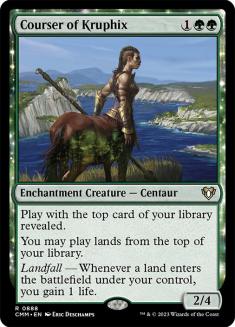

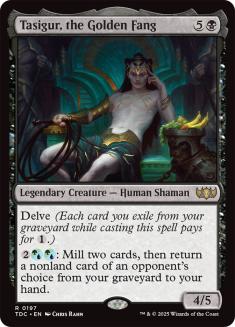
In:
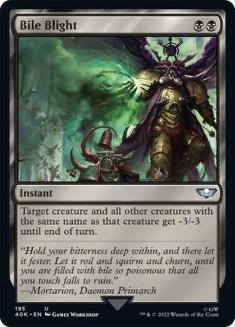
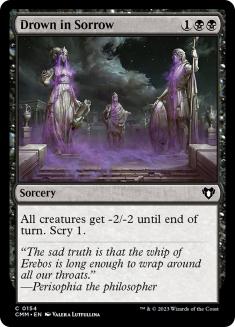
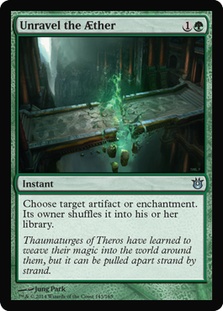
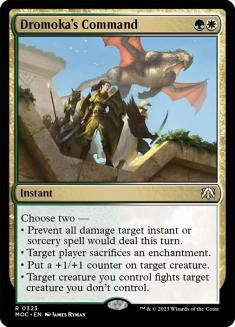
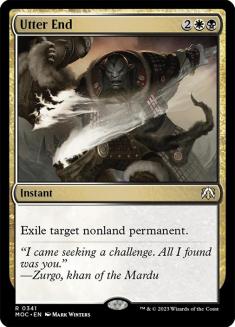
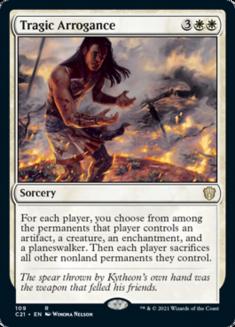
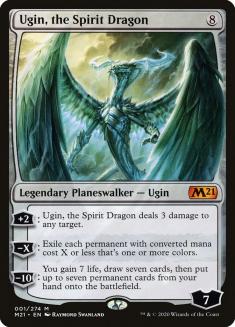
On the play I also like making room for Hallowed Moonlight, but on the draw it’s a bit slow. On the draw, we might want to include a Thoughtseize instead of Ugin, and possible another one instead of the second Courser or the Dromoka’s Command.
Why take out the Coursers?
One of the easiest ways for us to lose to G/W Aggro is to get super blown out by Dromoka’s Command. With fewer Coursers there will likewise be fewer spots early on in the game where we have no options for cards to play besides it.
Cards You Can Add To Beat G/W
We’ve already talked about Elspeth, but it’s not just Abzan and G/W that can pack Elspeths in their 75. The importance of Elspeth could lead us to U/W instead of U/B Control. We could add Elspeth to the sideboard of our Jeskai decks or even our Mardu decks.
When you’re playing Mono-Red, you do not want to sit down across from a G/W Aggro deck. However, if you’re prepared, you can actually hit them where it hurts. Sideboard in Satyr Firedancers and you can exploit their lack of ability to kill small creatures. They actually have little hope to remove the Firedancer besides Dromoka’s Command, and every turn that goes by you’re getting double value out of your burn spells. Normally, trading five burn spells for five creatures doesn’t leave the red deck much to show beyond damage from attacking. With Satyr Firedancer around, they might be a single burn spell away from death!
Speaking of creatures that punish someone for not being able to kill them, it might be time for a return of Goblin Rabblemaster. Not only is it great against G/W, it’s a surprisingly nice threat against U/R Thopters and G/R Devotion.
Creatures (19)
- 4 Eidolon of the Great Revel
- 3 Goblin Rabblemaster
- 4 Monastery Swiftspear
- 1 Lightning Berserker
- 3 Zurgo Bellstriker
- 4 Abbot of Keral Keep
Lands (21)
- 21 Mountain
Spells (20)
Sideboard

Magma Spray is an excellent way to deal with Morphs, Elvish Mystic, and especially Hangarback Walker because they won’t get their tokens. The only reason not to pack more is that we’ve already got so many two-damage spells.
Anger of the Gods doesn’t fit into most Mono-Red plans, but it is a nice weapon out of the sideboard of Jeskai or Mardu. It can really help buy us enough time to drop an Elspeth and take over. Just be careful about walking into a Dromoka’s Command. Take a look at the Jeskai list Ben Weitz used to Top Eight GP San Diego for a possible spot to try Anger of the Gods:
Creatures (17)
Lands (25)
Spells (18)
- 3 Lightning Strike
- 2 Stoke the Flames
- 1 Jeskai Charm
- 2 Dig Through Time
- 3 Valorous Stance
- 4 Wild Slash
- 3 Ojutai's Command
Sideboard

This list has some tools to interact with G/W, and stuff like Goblin Rabblemaster and Jace, Vryn’s Prodigy is excellent to build on. However, if we really wanted to get some edge against G/W, we could sideboard a couple of Anger of the Gods and a couple of Elspeths.
Anger of the Gods may seem like a nonbo with all these creatures that die to it, however, we have control over when we play our cards. Sometimes we just Anger on turn three and then start dropping our creatures. Other times we use Anger of the Gods to exile their Raptors and Hangarback Walkers, perhaps with Jace jumping off the battlefield and into planeswalker form.
When we do lose a creature, hopefully it’s Soulfire Grand Master. Anger of the Gods + Soulfire Grand Master is sometimes going to gain us eighteen or more life on top of sweeping the board!
Outside of Anger’s ability to wipe the board, just the fear of it can also slow opponents down, giving us more time to drop a game-winning Elspeth. It isn’t just a tool for bridging to Elspeths, though.
Creatures (4)
Lands (27)
Spells (29)
- 4 Anger of the Gods
- 2 Whelming Wave
- 4 Treasure Cruise
- 4 Tormenting Voice
- 1 Dig Through Time
- 1 Monastery Siege
- 2 Roast
- 4 Sphinx's Tutelage
- 2 Send to Sleep
- 1 Alhammarret's Archive
- 4 Magmatic Insight
Sideboard

Michael Majors got stuck playing Cuneo’s U/R Tutelage deck because of card availability… and set up a chain reaction that will undoubtedly alter the future of the metagame noticeably.
Why was U/R Tutelage such a great choice for this weekend? Well, that it has a good Abzan Control matchup is a given. That was one of Cuneo’s primary targets when designing the deck, and it seems he succeeded. However, the real kicker was the use of four maindeck Anger of the Gods, which is absolutely huge against G/W Aggro.
Stormbreath Dragon is a tricky one for G/W Aggro to deal with, as their removal is generally white and there’s a shortage of fliers. If you load a deck up with cheap, efficient removal, Stormbreath Dragon can usually kill G/W too fast for them to start getting ahead from their never-ending supply of creatures.
Creatures (16)
- 4 Stormbreath Dragon
- 4 Goblin Rabblemaster
- 1 Kolaghan, the Storm's Fury
- 4 Thunderbreak Regent
- 3 Hangarback Walker
Lands (25)
Spells (19)

While I don’t normally co-sign these kinds of decks (Dragons and a mix of removal, some burn, some not, with little card advantage), this is a particularly good time for it. Bile Blights and Draconic Roars already provide a lot of three-damage effects, but the two Anger of the Gods in the sideboard (along with two Crux of Fate) can be devastating to G/W Aggro.
I enjoy the metagame-hating maindeck Magma Sprays and Kolaghan’s Commands. This is a cool list that was built to be very well attuned to the state of the metagame. I just wish we could get a little more Read the Bones action in here!
Monastery Mentor is an even more extreme version of Goblin Rabblemaster. It’s very difficult for a G/W Aggro deck to deal with the Mentor, and it only needs to live a couple turns to completely dominate the game. Just be careful about when you cast your spells since anything more than a single Prowess trigger, will allow Valorous Stance to kill the Mentor.
Bant Heroic could incorporate more Monastery Mentor action and is particularly well-suited to using it against G/W since it can tap out for the Mentor then use Gods Willing to protect it from Stance on the following turn once it starts to go off.
I wonder if one might be able to come up with a new kind of U/W Control deck to attack the specifics of this format.
Creatures (12)
Planeswalkers (4)
Lands (25)
Spells (19)

I’m thirsty for a spot to use Archangel of Tithes, but getting to put it alongside Jaces and Elspeths has a certain appeal to it…
While not specifically for G/W Aggro, I just wanted to point out that it took exactly one Grand Prix for Michael Flores and my preview card, Infinite Obliteration, to put up a Top Eight. I think a lot of people probably doubted it would make it on a large stage, but here we are.
Creatures (24)
- 4 Elvish Mystic
- 4 Courser of Kruphix
- 4 Eidolon of Blossoms
- 3 Doomwake Giant
- 1 Pharika, God of Affliction
- 4 Brain Maggot
- 4 Herald of the Pantheon
Lands (24)
Spells (12)

However you plan to attack G/W Aggro, you can’t just sit by and do nothing. The deck faced a trial by fire at the GP, where it was not only one of the most popular decks but also the most successful one. It’s not just a fly-by-night brew, never to be heard from again. This is one of the big decks of the format, and we’ve got to adjust our decks with it in mind.
Its natural enemy, Abzan Control, might be too dangerous of a deck to play next week given how popular U/R Tutelage is sure to be. This is a good sign for G/W, assuming it’s confident in its plan against U/R. Kibler already advocated Unravels and Dromoka’s Commands, giving us a lot of interaction. Honestly, though, I think we can go even further. We don’t want to end up too reactive, but I can’t help but wonder if it’s time…
Creatures (25)
- 4 Elvish Mystic
- 4 Rattleclaw Mystic
- 4 Stratus Dancer
- 3 Hidden Dragonslayer
- 4 Den Protector
- 4 Deathmist Raptor
- 2 Ainok Survivalist
Lands (23)
Spells (12)




